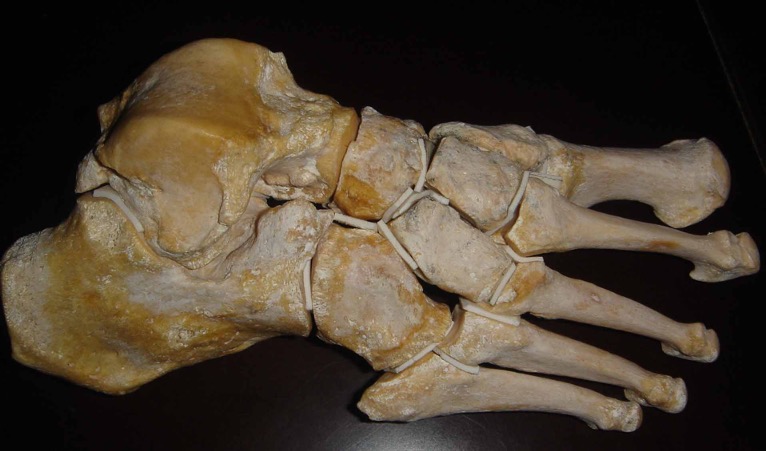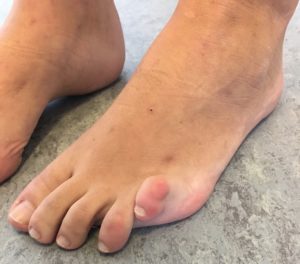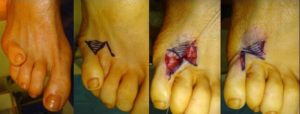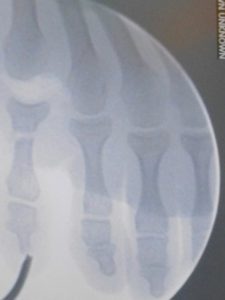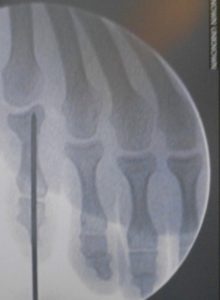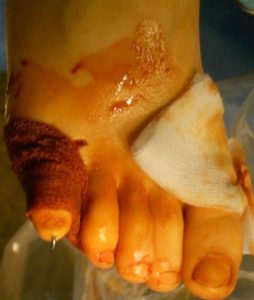Quintus varus is a deformity of the 5th toe, often congenital and worsening with age, where the toes lays on the 4th. The deformity has the full name of “quintus varus supraductus”.
Anatomy
The quintus varus deformity is caused by a severe retraction of the soft tissues surrounding the 5th toe’s base. The retracted tissues are the joint envelope (capsule), the extensor tendon, and also the skin. For this reason surgery is difficult.
Symptoms
The main problem is the discomfort with footwear, but the esthetic question is always more or less associated.
As for hallux valgus, surgery should not be performed for this only esthetic reason . It should be decided only if symptoms are well and truly identified.
Conventional open surgery
Conventional open surgery involves extending all retracted anatomical elements. It is aggressive to the tissues, technically difficult to achieve, and carries a significant risk of recurrence.
Percutaneous surgery of the quintus varus
Percutaneous surgery allows a much easier correction for both the surgeon to achieve and the patient to undergo. The retracted elements are first cut, but, in order to improve the power of the correction and to reduce the risk of recurrence, a percutaneous bone cut (osteotomy) of the first phalanx is performed. Thus the 5th toe is reoriented in a correct position and its soft tissues released.
A temporary pin is inserted in the toe to fix the correction. It is perfectly tolerated and does not prevent from walking normally.
At the end of the surgical procedure the toe’s axis is normalized and un dressing made.
Early postoperative days
As for the taylor bunion to which quintus varus is often associated, immediate full weight bearing is allowed on the operated foot. During the first days, the dressing acts as a “boot” for complete autonomy at home. Once changed, on the 2nd or 3rd day, a simple adhesive dressing allows the wearing of wide non-medicalized sneakers..
At 3 weeks, the pin is removed during a simple consultation, without any pain.
Cycling and swimming can be resumed at 1 month and running at 2 months.
